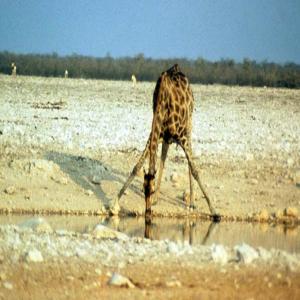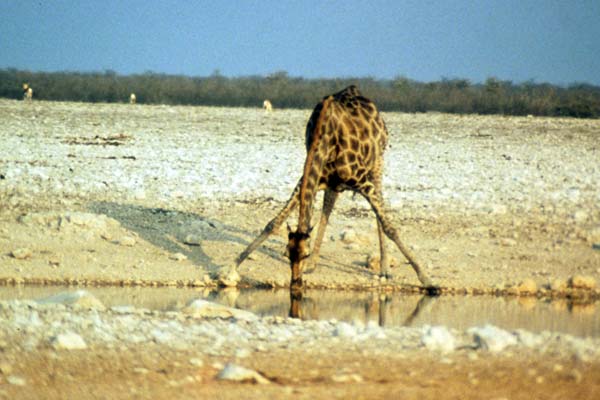Episodes

Monday Sep 13, 2010
The WildLife: Lorises, Anna Nekaris
Monday Sep 13, 2010
Monday Sep 13, 2010
Anna Nekaris, an expert on nocturnal primates, discusses Asia’s slow and slender lorises. She reveals to “The WildLife” host Laurel Neme what makes these creatures so special and why they’re sought after both as pets and as a key ingredient in traditional medicine. Did you know that the lovable, furry Ewoks in Star Wars films were modeled after slow lorises? But unlike Ewoks, lorises can’t jump or leap, which means they can only move through the forest canopy by using branches that touch.That makes an intact forest vital to their survival. Lorises are also one of the only venomous primates. They have a form of biological venom that’s produced by a gland in their elbows, which they mix with saliva to create a powerful toxin. These unique characteristics are what make them a sought after ingredient in traditional medicine across Asia. In fact, Anna and her research team recently completed the first major study of the use of lorises in traditional medicine in Asia and found a multitude of uses -- as a tonic for women after childbirth, for stomach problems, for healing wounds and broken bones, and in the treatment of sexually transmitted diseases. Lorises are seen as “an animal with 100 uses,” akin to aspirin in Western medicine. Anna Nekaris is a Reader and Course Tutor in Primate Conservation at Oxford Brookes University in the United Kingdom. She is also a member of the IUCN/SSC Primates Specialist Group, the Conservation Working Party of the Primate Society of Great Britain, and on the editorial board of Endangered Species Research and Folia Primatologica. Anna’s main research interests fall under the areas conservation, ecology, and speciation, with her fieldwork taking her to Trinidad, Senegal, Utah, India, Sri Lanka, Singapore, Indonesia, Uganda and Kenya. Although she has conducted fieldwork on bats, small carnivores (including civets and cats), mouse deer, and giant squirrels, her primary research focus is on primates. She has conducted many long-term studies of Indian and Sri Lankan slender lorises. Her current research project, on the diversity and conservation of Asian slow lorises, is being undertaken by Anna and postgraduate students in Java, Sumatra, Thailand, Cambodia, Laos, Singapore and Malaysia, where at least five species of slow loris are found. The team is using morphological, behavioral and vocal analyses to uncover diversity within this group. She has written several articles on the loris trade, including in Endangered Species Research and the American Journal of Primatology, contributed an article on the Javan slow loris to the IUCN/SSC Primate Specialist Groups Top 25 Most Endangered Primates, written a book that includes myths and legends on slender lorises, and contributes to the Loris Potto Conservation Database. This episode of “The WildLife” aired on The Radiator, WOMM-LP, 105.9 FM in Burlington, Vermont on September 13, 2010.

Monday Aug 02, 2010
The WildLife: Rhino Horn Trade, Rhishja Larson
Monday Aug 02, 2010
Monday Aug 02, 2010
Rhishja Larson, founder of Saving Rhinos, discusses the illegal trade in rhino horn and what can be done to stop it. She tells “The WildLife” host Laurel Neme that, because rhino horn has no real medicinal properties, this multimillion dollar illegal trade is built on a myth. Rhishja is trying to bust this myth – which in turn would eliminate the market for rhino horn. Rhishja also explores alternatives for dealing with the illegal rhino horn trade, including treating it as an organized crime with significant penalties and burning stockpiles of confiscated rhino horn as a statement to show the world that the animals are more valuable alive than dead. Rhishja Larson is a writer, activist, designer, and founder of Saving Rhinos. She launched the Saving Rhinos website in December 2007 to raise public awareness about the illegal rhino horn trade and the rhino poaching crisis. The Saving Rhinos website and its companion blog (www.rhinoconservation.org) provide a wealth of public awareness and education materials to schools, organizations and individuals all over the world and provides news, commentary, and insight on the illegal trade in rhino horn and the current rhino poaching crisis. In addition to writing her own blog Rhino Conservation: Rhino Horn is NOT Medicine, Rhishja has been a guest blogger on National Geographic’s NatGeo News Watch. She is also a writer for Bush Warriors, and has written for Green Options Media, focusing on endangered species protection and illegal wildlife trade. Her articles have been referenced and included in both print and online publications, such as Science News (Asian vultures), National Wind Watch (California condors), WildAid (elephant poaching), Bush Warriors (rhino poaching), The Rhino Print (Javan rhino), and International Zoo News (Javan rhino). This episode of “The WildLife” aired on The Radiator, WOMM-LP, 105.9 FM in Burlington, Vermont on August 2, 2010.

Monday Jul 26, 2010
The WildLife: Marine Aquarium Trade, Brian Tissot
Monday Jul 26, 2010
Monday Jul 26, 2010
Brian Tissot, marine ecologist, discusses the marine aquarium trade. He tells “The WildLife” host Laurel Neme how the United States, as the world's largest importer of marine ornamental species for the aquaria, curio, home decor and jewelry industries, has an opportunity to leverage its market power to promote more sustainable trade and reduce the effects of this trade on coral reefs worldwide. The trade in coral and coral reef species for ornamental purposes is substantial and growing, with approximately 30 million fish and 1.5 million live stony corals removed from the ecosystem each year. The aquarium industry alone targets some 1,500 species of reef fish, and many die in transit, prompting collectors to gather even more animals to compensate for potential losses. With the United States accounting for over half of the ornamental trade in live coral, reef fish and invertebrates, Tissot and 17 other scientists are calling on this country to leverage its market demand—through additional regulation and enforcement, public awareness campaigns, certification of sustainable products, and assistance to spread best practices in source countries—to make the trade more sustainable.
Dr. Brian Tissot is a Professor in the School of Earth and Environmental Science at Washington State University Vancouver. His research is focused on the interface between biology, management, and policy and examines ecological interactions between habitat and commercially important marine fishes and invertebrates and the role of the community in managing marine resources. Through collaboration with state, federal and international agencies he is involved in a range of activities including basic research, research with implications towards resource management, and environmental policy development in Hawaii, Washington, Oregon and California. In Hawaii, he helped improve the management of an aquarium fishery along the Kona coast by being a part of a collaborative research program with state biologists and policy makers, SeaGrant extension, and the local community. On the west coast he is examining the role of continental shelf invertebrates, especially deep water corals, and how they function as critical habitat for commercially important fishes. Information from his work has been used to improve management strategies for coral reefs in the Pacific, west coast bottom trawling, and in the development of legislation in Congress. In addition to over 60 publications in scientific journals, Dr. Tissot's work has been featured in Scientific American, National Geographic News, Smithsonian magazine and in the Washington Post. This episode of “The WildLife” aired on The Radiator, WOMM-LP, 105.9 FM in Burlington, Vermont on July 26, 2010.

Monday Jul 19, 2010
The WildLife: Gorillas & Bushmeat Trade, Pierre Fidenci
Monday Jul 19, 2010
Monday Jul 19, 2010
Pierre Fidenci, president of Endangered Species International (ESI), talks about gorillas and the bushmeat trade. He tells “The WildLife” host Laurel Neme about how ESI went undercover in Republic of Congo (Brazzaville) to monitor the bushmeat trade in key markets and found over 300 western lowland gorillas were butchered each year, with 95 percent of the illegal bushmeat originating from the Kouilou region, an area that is one of the last reservoirs of biodiversity and endangered animals in the area. Pierre Fidenci was born in Southern France, and at an early age was already involved in discovering, studying, and protecting nature. At the age of only 20, Pierre started Las Baulas National Marine Park in Costa Rica. At that young age, he also had already won multiple environmental awards including from Paul Sabatier University, the Nicolat Hulot Foundation, the French Government (Défit Jeune), and the Zellidja Foundation. More recently, he has received conservation awards from the Bp Conservation Programme, the Turtle Conservation Fund, and the Sophie Danforth Conservation Biology Fund. He has developed and directed conservation projects in South-, Central-, and North America, as well as in south East Asia, and Europe. His areas of expertise include amphibians and reptiles, applied conservation, biological surveys, and community based projects. Pierre is also a member of the IUCN Species Survival Commission (SSC). This episode of “The WildLife” aired on The Radiator, WOMM-LP, 105.9 FM in Burlington, Vermont on July 19, 2010.

